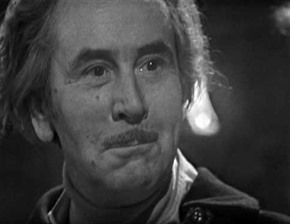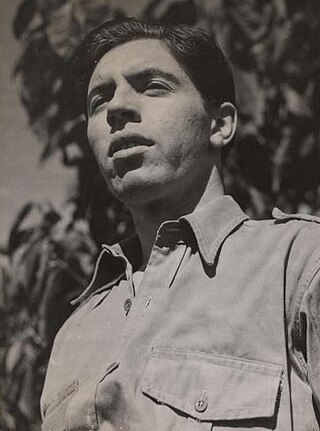Related Research Articles
The Box is an Australian soap opera that ran on ATV-0 from 11 February 1974 until 11 October 1977 and on 0–10 Network affiliates around Australia.

The Holden Kingswood is a full-size car that was developed and manufactured in Australia by Holden, from the beginning of the HK series in 1968 through to the conclusion of the WB series in 1985. Prior to 1968, the full-size Holden range of family cars comprised the Holden Standard, the Holden Special, and Holden Premier models. Initially, the HK range of models included the basic Holden Belmont, the Kingswood, and the luxury-oriented Holden Premier, all of which were manufactured in a choice of sedan and station wagon bodies. Commercial variants were offered in three types: coupé utility, panel van, and later from 1971, a heavy-duty Holden One Tonner cab chassis. The utility (ute) version was originally marketed in both Belmont and Kingswood configurations. However, after the Belmont name was deleted from commercials at the end of HQ in late 1974, the base model commercials were sold only with the "Holden" badge.

Hunter is an American crime drama television series created by Frank Lupo, which ran on NBC from September 18, 1984, to April 26, 1991. It stars Fred Dryer as Sgt. Rick Hunter and Stepfanie Kramer as Sgt. Dee Dee McCall. The title character Sgt. Rick Hunter is a wily, physically imposing, often rule-breaking homicide detective with the Los Angeles Police Department.
Water Rats is an Australian TV police procedural broadcast on the Nine Network from 1996 to 2001. The series was based on the work of Sydney Water Police who fight crime around Sydney Harbour and surrounding locales. The show was set on and around Goat Island in Sydney Harbour.
Paul Cronin was an Australian actor who played roles in the Australian television series Matlock Police and The Sullivans. He won the Silver Logie for Best Actor five times, including three years consecutively from 1978, the most awarded actor in Australia, alongside Martin Sacks.

Crawford Productions is an Australian media production company, focused on radio and television production. Founded in Melbourne by Hector Crawford and his sister, actress and voice artist Dorothy Crawford, the company, also known as Crawfords Australia, is now a subsidiary of the WIN Corporation.
Homicide was a landmark Australian television police procedural drama series broadcast on the Seven Network and produced by Crawford Productions. It was the television successor to Crawfords' radio series D24. The "Consummate Homicide cast" includes the four characters that are the best known: Det. Snr. Sgt. David "Mac" MacKay, Det. Sgt. Peter Barnes, Inspector Colin Fox and Sen. Det. Jim Patterson.
Solo One is an Australian television series made by Crawford Productions for the Seven Network and screened in 1976. There were 13 half-hour episodes.

Bluey is an Australian television series made by Crawford Productions for the Seven Network in 1976.

Joseph Fürst was an Austrian-born international film and television actor known for his English language roles in Britain and Australia, after first appearing on the Canadian stage.
Thomas Richards is an Australian former actor on television soap operas. He is best known for roles including in Matlock Police as Steve York from 1973 and 1976 and in the 1980s soap opera Sons and Daughters as David Palmer from 1982 until 1987, opposite co-star Leila Hayes.

Michael Pate OAM was an Australian actor, writer, director, and producer, who also worked prolifically as a supporting actor in Hollywood films and American Television during the 1950s and 1960s.

Ryan is an Australian adventure television series screened by the Seven Network from 27 May 1973. The series was produced by Crawford Productions and had a run of 39 one-hour episodes.

City Homicide is an Australian television drama series that aired on the Seven Network between 27 August 2007 and 30 March 2011. The series was set on the Homicide floor of a metropolitan police headquarters in Melbourne. The main characters were six detectives, who solve the murder cases, and their three superior officers.
Gary Day is a New Zealand former actor, playwright and lighting director who has appeared in Australian television police drama series, including Homicide and Murder Call.

The Holden HQ series is a range of automobiles that was produced by Holden in Australia from 1971 to 1974. The HQ was released on 15 July 1971, replacing the Holden HG series. It was the first ground-up redesign of the Holden line since its original release in 1948, and included an all-new body, chassis, and suspension. The HQ was later developed into a series of successor models, finally ending production when the WB series was discontinued in 1985.
Cash and Company is an Australian television period adventure series, set during the Victorian gold rush of the 1850s. It screened on the Seven Network in Australia in 1976 and on ITV in the UK.
Stewart Ginn was an Australian radio, stage and television actor, best known as the character Nancarrow in the 1960s television comedy My Name's McGooley, What's Yours?.
Vic Gordon was a British Australian character actor of vaudeville, television and film, best known for his achievements in the fields of drama, light entertainment, music and comedy.
Terry McDermott was an Australian stage, radio and television actor known for his roles in the series Homicide and Bellbird.
References
- ↑ In episode 123, "Ski-Do", Maddern and Hogan are asked by the local police to investigate a disappearance on the slopes of "Mount Keira" (filmed at Fall's Creek).
- ↑ In accordance with Victoria Police Force changes, Detective Sergeant Maddern became Detective Senior Sergeant and Sergeant Kennedy became Senior Sergeant Kennedy.
- ↑ In a case of life imitating art, Victoria Police outfitted their motorbikes with radios.
- ↑ "Matlock Police". www.classicaustraliantv.com.
- ↑ Michael Pate had refused to extend his contract for a further three episodes to cover the gap before Peter Gwynne's arrival, so York was left on his own in C.I. Branch and Pate edited out of the opening credits. Ironically, Gwynne had previously appeared as a quirky Homicide detective alongside Pate in episode 155, "Nothing Man".
- ↑ ""Matlock Police" In the Name of the Queen (TV Episode 1974)". IMDb .
- ↑ "The Age - Google News Archive Search". news.google.com.
- ↑ Bazzani, Rozzi (2015). Hector : the story of Hector Crawford and Crawford Productions. North Melbourne, Vic: Arcadia. p. 218. ISBN 978-1-925003-73-4. OCLC 930045883.
- ↑ "TV Cameraman Killed". The Age. 28 August 1971. p. 3. Retrieved 22 August 2019.
- ↑ "Crawfords DVD - Great Australian Television Entertainment History". Crawfords DVD - Great Australian Television Entertainment History. Archived from the original on 11 May 2015. Retrieved 4 June 2015.